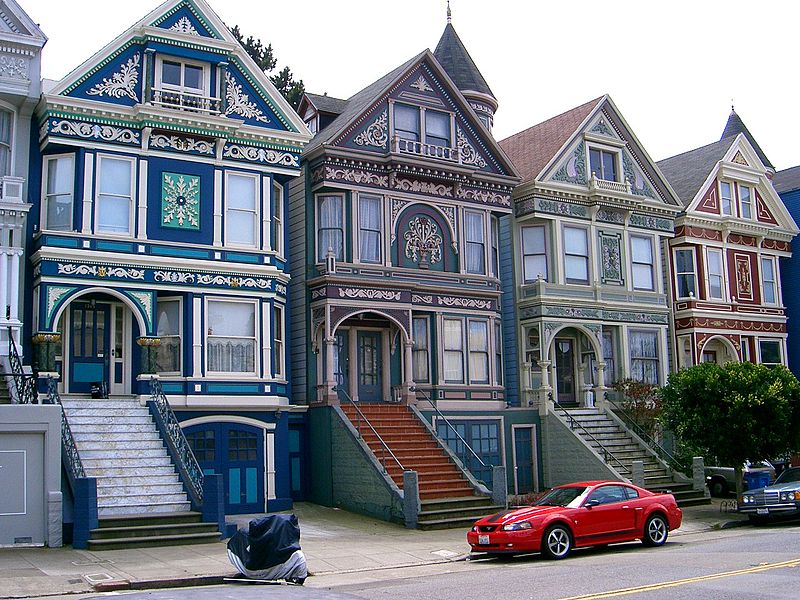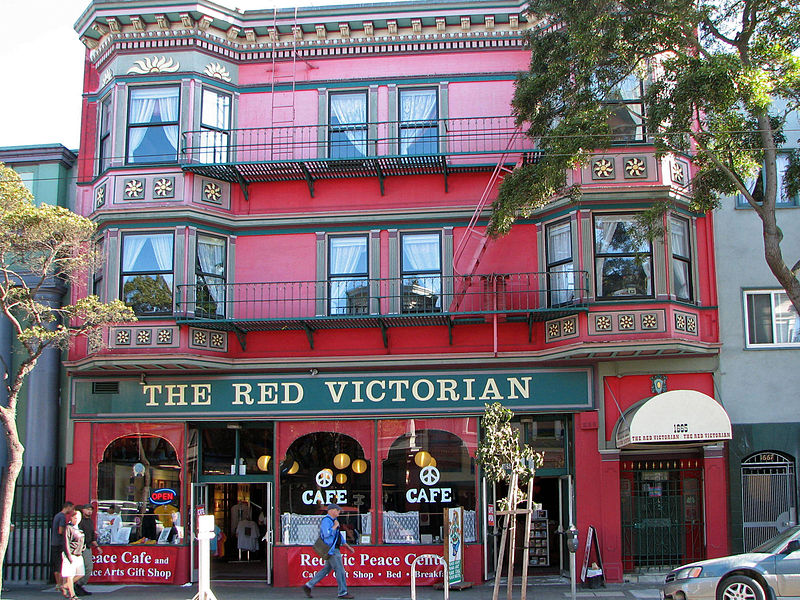At CISL, we are continuing our series on the 12 tenses in the English language with the tense of the month: Present Perfect. If you haven’t already checked out our first installments in this series, make sure to read up on the Simple Present, Present Continuous, Simple Past, and Past Continuous!
This lesson also features one of the most vivid areas of San Francisco: Haight-Ashbury. Once the center of the hippie movement in the 1960s, the Haight-Ashbury of today still maintains the bohemian culture it was founded upon.
The Present Perfect Forms
The forms of the Present Perfect are as follows:
1. has/have + past participle (third verb)
- I have visited Haight-Ashbury.
- Everyone in my CISL class has walked the Haight’s famous streets.
- My mother has always loved the beautiful painted lady Victorian houses of the Haight.

2. has/have + not + past participle
- I haven’t been to Haight-Ashbury’s famous record store, Amoeba Music.
- She hasn’t heard of Haight-Ashbury and she has lived in San Francisco for two years. I can’t believe it!
- We haven’t experienced the Haight Street Fair, which is held in June each year.
3. Has/have + subject + past participle
- Have you (ever) heard of the famous Red Victorian hotel?
- Has she shopped in any of the cool boutiques?
- Have we taken pictures in front of the area’s Victorian style houses? We should!
The Present Perfect Uses
The Present Perfect has several uses. It is understandably confusing for students to learn them all, but with a little practice, you will become familiar with all uses of the Present Perfect.
A good way to categorize the uses of the Present Perfect is to separate them into “Unspecified Time” and “Specified Time” groups. With “Unspecified Time,” we do not know when the action occurred or started in the past. With “Specified Time,” we do.
The Present Perfect for Experiences (Unspecified Time)
If you did something in the past, then you are changed. Remember the time you traveled to San Diego to study English? For the rest of your life, you will say “I have studied English in San Diego.” Even when you are in your home country, you will still be able to use the Present Perfect. The person to whom you are speaking will understand that you do not live in San Diego now, but that in the past you lived there and studied English.
Here are some more examples:
- I have eaten at a restaurant in Haight-Ashbury three times.
- I have been to the I-Beam nightclub. It’s awesome!
- I have seen many interesting people in this area.
- I have taken pictures of the hippies in Haight-Ashbury many times.
- She has purchased fun gifts from many of the vintage boutiques on Haight.

Note that often we use the amount of times (in the above example, “three times”) or expressions like “many times” to show exactly how often this action has been done.
The Present Perfect for Change over Time (Unspecified Time)
Some things begin in the past and slowly change: for example, growing, changing, evolving, or becoming something all take a long time. The Present Perfect expresses this gradual change.
- Haight-Ashbury has changed a lot since the Summer of Love in the 60s.
- The area has undergone a lot of changes since the 70s, when it was known as an area for partying.
- Although the area has grown and the residents have changed, the hippy culture still remains.
Note that we do not really know when these things began or how long they have continued, which is why we call them “unspecified time.”
The Present Perfect for Something that Began in the Past (Specified Time)
We often say that the Present Perfect has a connection to today, which means that the Present Perfect can be used to talk about things that started in the past and continue until now. For example, right now you are living somewhere in the world. How long have you lived there? To express this, you need the Present Perfect and then “for” or “since” plus the amount of time. (For a detailed explanation on the differences between “for” and “since” and how to use them with the Present Perfect, check out our previous post on this subject.)
Here are some examples:
- The Red Victorian has been a popular hotel for many years.
- The Haight has been a “hippy area” since the Summer of Love.
- Haight-Ashbury has been a popular tourist area since the 70s, when the area was cleaned up a lot.

Here, with the addition of “for” and “since” we know exactly when the action began in the past and how long it has continued.
The Present Perfect for an uncompleted action that you expect will finish
- He hasn’t visited the Haight yet.
- I have been to the Haight many times but I still haven’t seen the famous painted lady Victorian houses.
- We have been here for three hours and my roommate still hasn’t finished shopping!
All photos from Wikipedia and licensed under WikiCommons.
